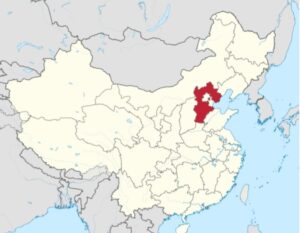E. Hebei 2019
 Hebei is a province in North China. It is China’s sixth-most populous province, with a population of over 75 million people. Shijiazhuang is the capital city. It borders Shanxi to the west, Henan to the south, Shandong and Liaoning to the east, and Inner Mongolia to the north; in addition, Hebei entirely surrounds the direct-administered municipalities of Beijing and Tianjin on land. Its population is 96% Han Chinese, 3% Manchu, 0.8% Hui, and 0.3% Mongol. Varieties of Chinese spoken include Jilu Mandarin, the Beijing dialect of Mandarin, and Jin Chinese.
Hebei is a province in North China. It is China’s sixth-most populous province, with a population of over 75 million people. Shijiazhuang is the capital city. It borders Shanxi to the west, Henan to the south, Shandong and Liaoning to the east, and Inner Mongolia to the north; in addition, Hebei entirely surrounds the direct-administered municipalities of Beijing and Tianjin on land. Its population is 96% Han Chinese, 3% Manchu, 0.8% Hui, and 0.3% Mongol. Varieties of Chinese spoken include Jilu Mandarin, the Beijing dialect of Mandarin, and Jin Chinese.
During the Spring and Autumn and Warring States periods (771–226 BC), the region was ruled by the states of Yan and Zhao. During the Yuan dynasty (1271–1368), the region was called Zhongshu. It was called North Zhili during the Ming dynasty (1368–1644), and simply Zhili during the Qing dynasty (1644–1912). The modern province of Hebei was created in 1928. Five UNESCO World Heritage Sites can be found in the province: the Great Wall of China, Chengde Mountain Resort, Grand Canal, Eastern Qing tombs, and Western Qing tombs. It is also home to five National Famous Historical and Cultural Cities: Handan, Baoding, Chengde, Zhengding and Shanhaiguan.
Hebei’s economy is based on agriculture and manufacturing; it is China’s premier steel producer, which has contributed to serious air pollution.
